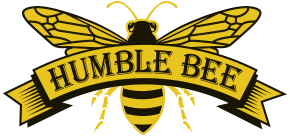Humble Bee Vineyards is a Gold Medal winning small batch winery located in Northeastern Ohio with the main focus of producing Honey Wines. Our mission is to produce a wide variety of Honey Wine using exceptional ingredients to create different flavors of Honey Wines for our customers to experience. Thanks to the abundant farming industry within the state of Ohio, Humble Bee Vineyards currently purchases 90% of our fruit and 100% of our honey from local suppliers.
Our Goal is to provide our customers with premium flagship brand of Honey Wine while also providing seasonal flavored wines.
Our Goal is to provide our customers with premium flagship brand of Honey Wine while also providing seasonal flavored wines.
What Is Honey Wine?
Honey Wines, also known as Mead, dates back to at least 7000 BC. This drink is often referred to as "Nectar of the Gods."
Honey Wine is a mixture of honey, water, yeast and other added ingredients depending on traditions. Honey comes in different varieties depending on the flowers the bees visit... each with a unique flavor and sweetness. Many different factors affect the taste on Honey wine. These factors include the type of honey, additives (fruit, hops, spices and even grapes), yeast and the aging procedure. This terminology is similar to describing red and white wine.
Our mead is not overly or syrupy sweet. If you've tried other mead before and found it to be far too sweet for your taste, then try ours. Many of our mead recipes are semi-sweet or semi-dry with a crisp, light body, notes of fruit, and a slightly tart, dry finish.
Honey Wine is a mixture of honey, water, yeast and other added ingredients depending on traditions. Honey comes in different varieties depending on the flowers the bees visit... each with a unique flavor and sweetness. Many different factors affect the taste on Honey wine. These factors include the type of honey, additives (fruit, hops, spices and even grapes), yeast and the aging procedure. This terminology is similar to describing red and white wine.
Our mead is not overly or syrupy sweet. If you've tried other mead before and found it to be far too sweet for your taste, then try ours. Many of our mead recipes are semi-sweet or semi-dry with a crisp, light body, notes of fruit, and a slightly tart, dry finish.
Fun Facts About Bees & Honey
Worker honey bees are all females. Males do not know how to even feed themselves and their only reason for being in the hive is for reproducing with the queen. The males do not have a stinger and they are kicked out of the hive in the fall, because there are no uses for them.
Bees are responsible for 80% of pollination that occurs. So next time you're eating any fruit or vegetable, thank a honey bee!
A bee lives less than 40 days, visits at least 1,000 flowers and produces less than a teaspoon of honey, but for her it is the work of a lifetime.
Propolis is the waxy resin substance produced by bees from the plants they visit. It is used for the construction of their hives. It is one of nature's most powerful antibiotics.
Honey has no expiration date. A single spoonful of honey is enough to keep a person alive for 24 hours. Honey contains live enzymes, and has been known to help brain function. Honey has been used by ancient healers as an anti-septic for wound dressing. The use of a metal spoon can kills these beneficial enzymes, so the recommended way to serve honey is with a wooden or plastic spoon.
Honey Wine is the planet's oldest fermented beverage. Its history dates back over eight thousand years. Many of the first coins ever minted in the civilized world featured a bee symbol.
Honey Wine is truly a global drink. It independently originated in very diverse cultures including Egyptian, Celtic, Indian and Scandinavian.
In Medieval times, it was customary for a newly married couple to be given enough mead to drink a glass every night for the first month (or moon cycle) of their marriage. If the wife became pregnant and bore a son, the mead maker was congratulated and held in great esteem for his potent nectar. This is the origin of the term honeymoon.
Bees are responsible for 80% of pollination that occurs. So next time you're eating any fruit or vegetable, thank a honey bee!
A bee lives less than 40 days, visits at least 1,000 flowers and produces less than a teaspoon of honey, but for her it is the work of a lifetime.
Propolis is the waxy resin substance produced by bees from the plants they visit. It is used for the construction of their hives. It is one of nature's most powerful antibiotics.
Honey has no expiration date. A single spoonful of honey is enough to keep a person alive for 24 hours. Honey contains live enzymes, and has been known to help brain function. Honey has been used by ancient healers as an anti-septic for wound dressing. The use of a metal spoon can kills these beneficial enzymes, so the recommended way to serve honey is with a wooden or plastic spoon.
Honey Wine is the planet's oldest fermented beverage. Its history dates back over eight thousand years. Many of the first coins ever minted in the civilized world featured a bee symbol.
Honey Wine is truly a global drink. It independently originated in very diverse cultures including Egyptian, Celtic, Indian and Scandinavian.
In Medieval times, it was customary for a newly married couple to be given enough mead to drink a glass every night for the first month (or moon cycle) of their marriage. If the wife became pregnant and bore a son, the mead maker was congratulated and held in great esteem for his potent nectar. This is the origin of the term honeymoon.

